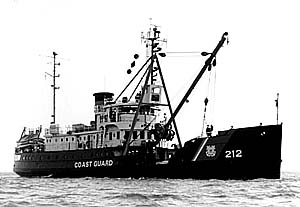37°47′49.1″N 122°17′24.5″W / 37.796972°N 122.290139°W





Moore Dry Dock Company was a ship repair and shipbuilding company in Oakland, California. In 1905, Robert S. Moore, his brother Joseph A. Moore, and John Thomas Scott purchased the National Iron Works located in the Hunter's Point section of San Francisco, and founded a new company, the Moore & Scott Iron Works Moore had previously been vice president of the Risdon Iron Works of San Francisco. Scott was nephew to Henry T. and Irving M. Scott, owners of the nearby Union Iron Works, where John had risen from apprentice to superintendent. Their new business was soon destroyed by fire resulting from the San Francisco earthquake.
In 1909, Moore and Scott decided to move across the Bay, and so purchased the W. A. Boole & Son Shipyard, located in Oakland at the foot of Adeline Street[1] along the Oakland Estuary.
In 1917, Moore bought out Scott and changed the business name to Moore Shipbuilding Company. Henry T. Scott and John T. Scott tried to establish a rival business with the Pacific Coast Shipbuilding Company,[2] an enterprise that eventually did not outlive the World War I shipbuilding boom. The Design 1015 ship was also called the Moore & Scott Type.
In 1922, Moore Shipbuilding renamed to the Moore Dry Dock Company, operating primarily as a repair yard, amidst a severe lack of demand for new construction in the 1920s and early 1930s. Its shipbuilding capabilities were again promptly expanded for the World War II boom, providing over 100 ships for the U.S. Navy and merchant marine.[3] Moore ranked 82nd among United States corporations in the value of World War II military production contracts.[4] Shipbuilding ceased at war's end, but repair operations continued.
In 1950, the Moore facility was the target of a union picket when sailors were having a dispute with a ship owner whose ship was in Moore's dry dock at the time. The court battle which ensued eventually led to the Moore Dry Dock Standards for Primary Picketing at a Secondary Site (Sailors' Union of the Pacific (Moore Dry Dock Co.), 92 NLRB 547, 27 LRRM 1108 (1950)).[5]
Moore Dry Dock Company ceased operations in 1961. Its site at the foot of Adeline Street on the Oakland Estuary is now occupied by Schnitzer Steel Industries, a large scrap metal recycling concern, based in Portland, Oregon.[6]
- ^ "Adeline Street, Oakland CA". Google Maps. Retrieved 11 May 2021.
- ^ "In and About San Francisco". Pacific Marine Review. October 1917. p. 79.
- ^ Herman, Arthur. Freedom's Forge: How American Business Produced Victory in World War II, pp. 261, 265, Random House, New York, NY, 2012. ISBN 978-1-4000-6964-4.
- ^ Peck, Merton J. & Scherer, Frederic M. The Weapons Acquisition Process: An Economic Analysis (1962) Harvard Business School. p. 619
- ^ Rainsberger, Paul K. Federal Labor Laws, XXVIII. Common Situs Picketing, University of Missouri – Labor Education Program. Revised, February 2004. Retrieved 31 October 2010.
- ^ "Moore Dry Dock Co. Becomes Schnitzer Steel". Waterfront Action. 2005. Retrieved 1 March 2013.